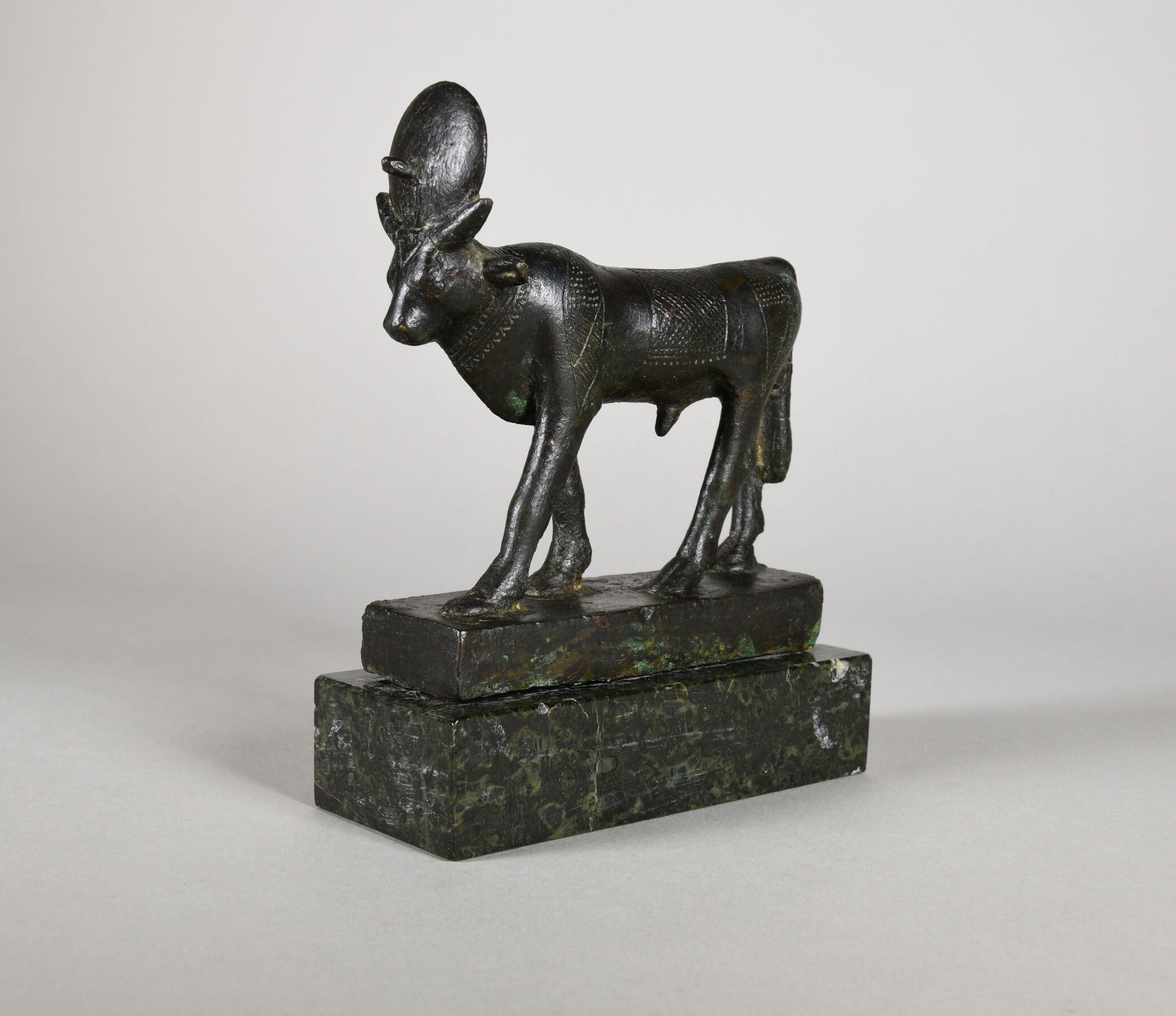The best-known sacred animal in ancient Egypt was the Apis bull. The Egyptians believed the Apis was the ba, the incarnation of the creator god Ptah, the chief deity of Memphis. Only one black bull at a time could be the Apis, and it needed distinctive markings on its hide. These included a white triangular blaze on the bull’s forehead and wing-like markings on its front and back. Bronze statues often show a patterned saddlecloth on the back and a collar around the neck.1 A sun disk with a uraeus rests on the bull’s horns, linking him with the sun god. Votive Apis statuettes come primarily from Memphis and Saqqara.2
When the Apis bull died, it was buried in the Serapeum at Memphis, and a search for a new Apis bull began. Once discovered, the Apis bull and its mother were quartered in Memphis at “The Place of the Apis in the Temple of Ptah.” Here, the bull lived a pampered life. On certain days, the bull was led out into a courtyard where pilgrims gathered to worship and receive oracles. Worshipers received a “yes” or “no” answer to their questions depending on which of the two doors the Apis entered.
MH
Bibliography
- Weiss 2012
- Weiss, Katja. 2012. Ägyptische Tier- und Götterbronzen aus Unterägypten: Untersuchungen zu Typus, Ikonographie und Funktion sowie der Bedeutung innerhalb der Kulturkontakte zu Griechenland. Ägypten und Altes Testament 81. Wiesbaden: Harrassowitz Verlag.
